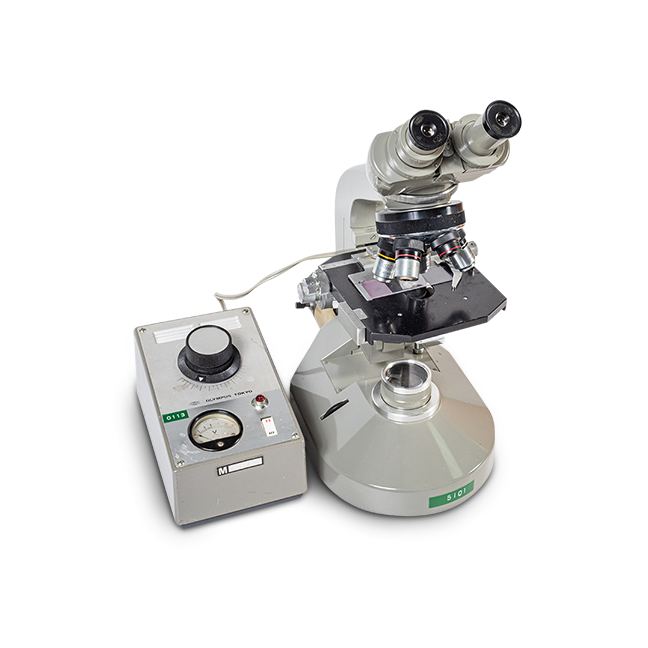
An optical microscope magnifies objects by reflected light from a mirror up through the specimen, or object to be viewed, into the powerful objective lens, which produces the first magnification. The image produced by the objective lens is then magnified again by the eyepiece lens, which acts as a simple magnifying glass.
This microscope is equipped with a light source which means it can be used in the absence of sun light. It also has a range of lenses with different magnification mounted on a turret, allowing them to be rotated into place and providing an ability to zoom-in.
It was used to inspect creams for the presence of air (as air may result in breakdown of the cream by oxidation and also reduce the actual quantity of cream in the tube) and to characterise particles of Pharmaceutical Active Ingredients (APIs) since the shape of these particles could affect their physical characteristics (especially their dissolution rate i.e. how fast they dissolve in a particular medium) and thus have an effect on the quality of the resulting medicinal product. A most characteristic example is Piroxicam (a nonsteroidal anti-inflammatory drug (NSAID) that went onto the market in 1979 and is used to relieve the symptoms of painful inflammatory conditions like arthritis), which may have a rhombic or needle-like shape, with one type having a very slow dissolution rate making that shape unsuitable for medicinal products.